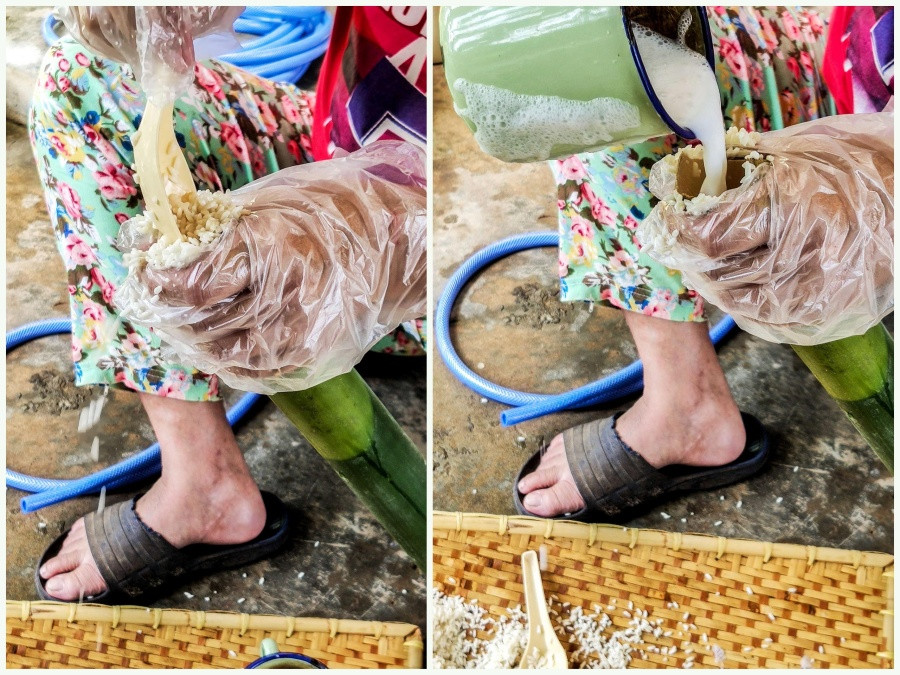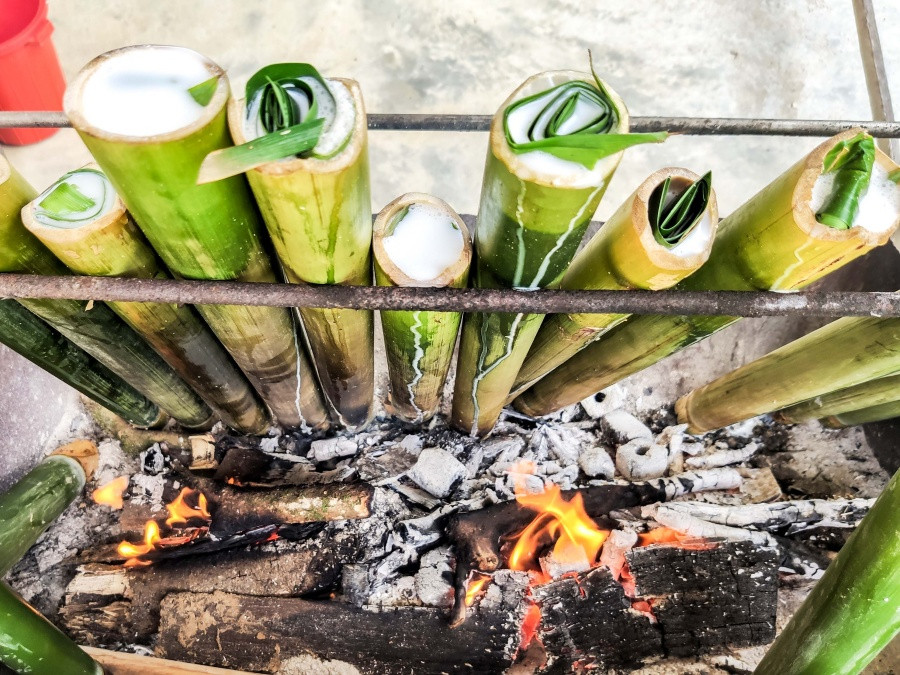An introduction to pangkang
by Maynard Keyne Langet06 Aug 2021
It may look like lemang but it isn’t. Learn about the skills that go into making pangkang, a longtime rice staple for Borneo’s Dayak community.
Pangkang, also known as pogang, is a Bidayuh staple of glutinous rice cooked in bamboo. While it might look exactly like lemang, it differs in one aspect: it doesn’t use banana leaves as a sheath.
Instead, it relies directly on the bamboo shaft it is cooked in as its skin. Traditionally, coconut milk was not used for pangkang but today, it has become more common. Without refrigeration, pangkang can be kept at room temperature for days and is only cut when served.
Dishes traditionally paired with pangkang were fried dahang ikan (or pekasam ikan) or it used to be eaten on its own. Now, with the diffusion of cultures especially from coastal communities, pangkang is eaten with curries, tomato ketchup and even kuah kacang, which were all introduced much later into the Dayak food repertoire.
Pangkang is usually made and eaten for the harvest festival like Gawai, Christmas, or any cultural or social event. It is sometimes used as offerings for departed family members or rituals to propitiate the spirits.
How is it made?
The bamboo used for making pangkang is the smaller variety, generally with an inner diameter of 1.5 to two inches. It should be mature as young bamboo may be too wet and crack under the heat from the open flame. The length doesn’t matter although the longer it is, the harder it is to ensure even cooking.
Glutinous rice is washed and soaked overnight. Then, the rice is mixed with salted water and coconut milk if needed. The salted water should be saltier than usual as it will become diluted when the rice absorbs the salt. The rice mixture is then packed into sectioned bamboo shafts two inches from its mouth, and the leftover liquid poured in until just barely above the rice level. Siseng (plug) the opening with rolled leaves, like pandan to prevent dust or insects from falling inside, and to keep constant pressure.
The filled bamboo shafts are laid leaning above the open flame, turned constantly to avoid burning. It will be ready once it stops steaming heavily and the outer layer of the bamboo is evenly browned.
Once cooled, using a very sharp knife, the bamboo skin is shaved uniformly towards the base, until achieving approximately 1mm thickness. To serve, the pangkang will be cut into 2.5-inch sections. To make it easy to peel, roll the pangkang between your palms to ease the rice from the bamboo skin and gently peel a strip before unfurling the bamboo layer.
Modern-day challenges
The high level of skill required to make pangkang could be a hindrance for many now. It requires a good eye at picking and cutting the appropriately sized bamboo, an understanding of cooking rice above an open flame, and a deft hand at shaving the cooked bamboo.
This labour-intensive aspect makes it less commonly sold in the markets, or only seasonally available. Pangkang-making skills are quite rare these days, but hopefully they won’t be completely forgotten in generations to come.
**
Maynard Keyne Langet is a Bidayuh with a penchant for Dayak food culture and tuak.
Read next
Eat your feelings: How can I make the most of packet mixes?
Boost your instant mixes and sauces

The 101: How to avoid soggy meehoon
To soak or not to soak?

The 101: How to prepare keluak
Cleaning keluak for safe consumption






